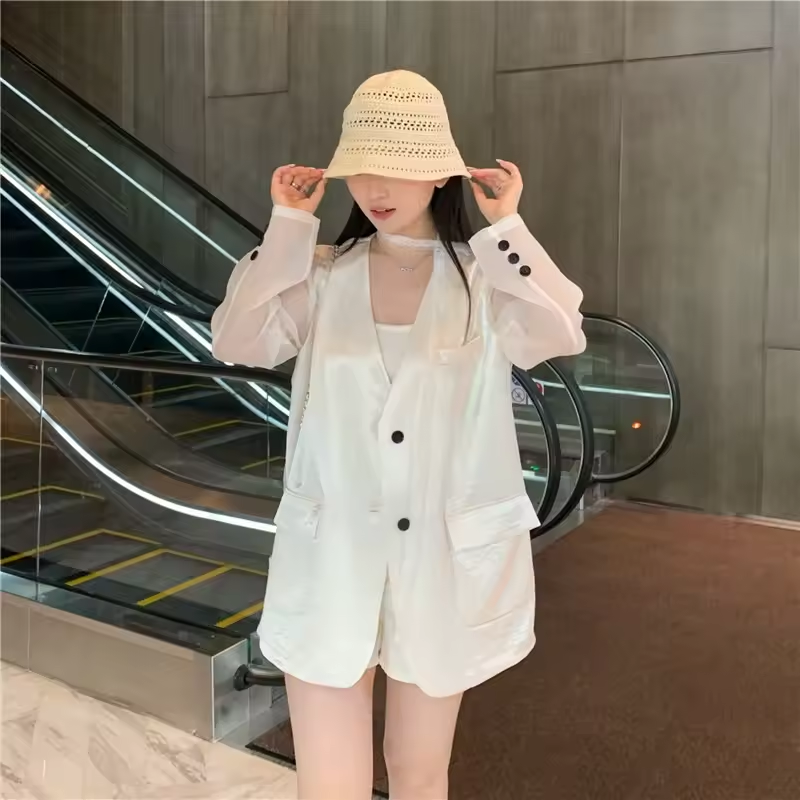
Introduction to Blazer and Sport Coat
When diving into the realm of men’s jackets, a common confusion arises with the terms blazer and sport coat. Both garment types serve as semi-formal outerwear that add a touch of class and style to an outfit. However, there are distinguishing features that set them apart. Blazers often come in solid, darker colors such as navy, black, or gray and they tend to have a more formal look. They are typically made from heavier fabrics and are often part of a uniform or club attire. In contrast, sport coats are less formal and exhibit a wider range of patterns and colors. They emanate a more casual vibe, making them versatile for various settings.
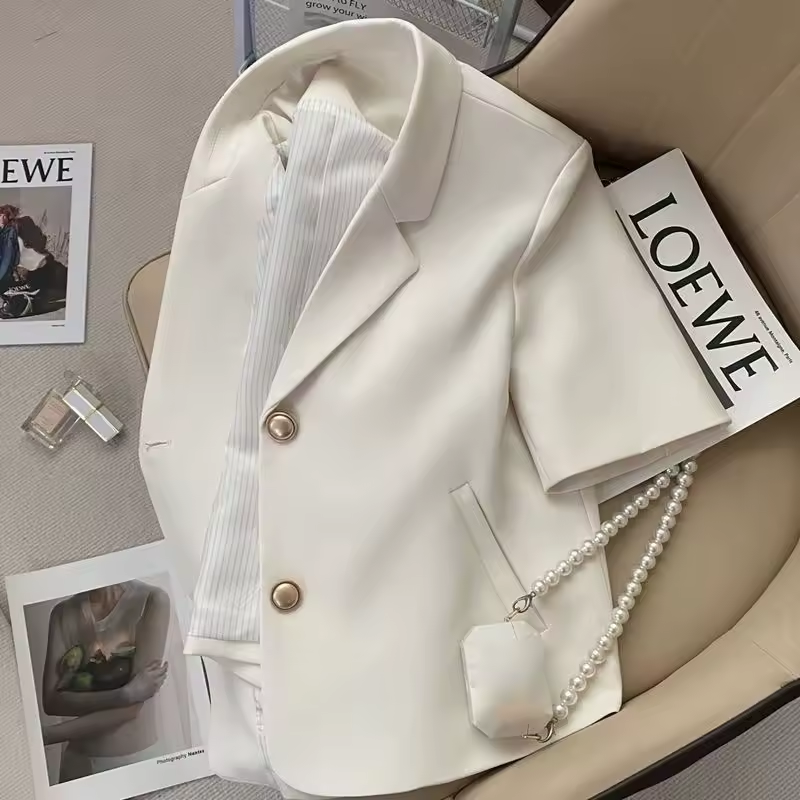
The terms blazer and sport coat are sometimes used interchangeably, but it’s important to recognize the difference to make appropriate fashion choices. Blazers pair well with dress trousers and are a staple for business casual events or smart-casual dress codes. Sport coats, due to their relaxed nature, are better suited to pair with jeans or khakis for a casual yet polished look.
In summary, the main distinctions between blazer and sport coat lie in their origins, level of formality, and most suitable occasions for wear. Understanding these differences is key for anyone looking to refine their wardrobe with the right kind of jacket for various social settings or events.
Key Differences Between Blazer and Sport Coat
Understanding the key differences between blazer and sport coat is essential for making informed decisions about your wardrobe.
Fabric and Weight
Blazers generally use thicker and sturdier materials like wool, making them ideal for cooler environments. Sport coats often feature lighter, more breathable fabrics such as linen or lightweight tweeds. The choice of fabric contributes to the formality and weight of the jacket, with blazers being the heavier counterpart.
Colors and Patterns
Blazers usually appear in solid, neutral colors which promote a more formal aesthetic. In contrast, sport coats boast a variety of colors and lively patterns. These patterns can range from checks and herringbones to plaid, reflecting a sport coat’s casual flair.
Structure and Cut
The cut of a blazer is typically more structured, offering a defined silhouette that aligns with its formal nature. Sport coats offer a relaxed fit with less rigidity, accommodating a wider range of movements and casual use.
Buttons and Details
Blazers commonly feature gold or brass buttons that enhance their polished look. This detail often signals a garment’s affiliation with organizations or clubs. On the other hand, sport coats have more subdued buttons made from materials like horn or plastic.
Formality and Occasions
Blazers suit more formal settings such as business meetings or upscale events, while sport coats are apt for casual outings. The versatility of sport coats allows them to be dressed down with jeans or chinos.
By identifying these distinctions between blazer and sport coat, you can select the appropriate jacket for the right occasion. It helps in creating a look that is not only stylish but also situation-appropriate.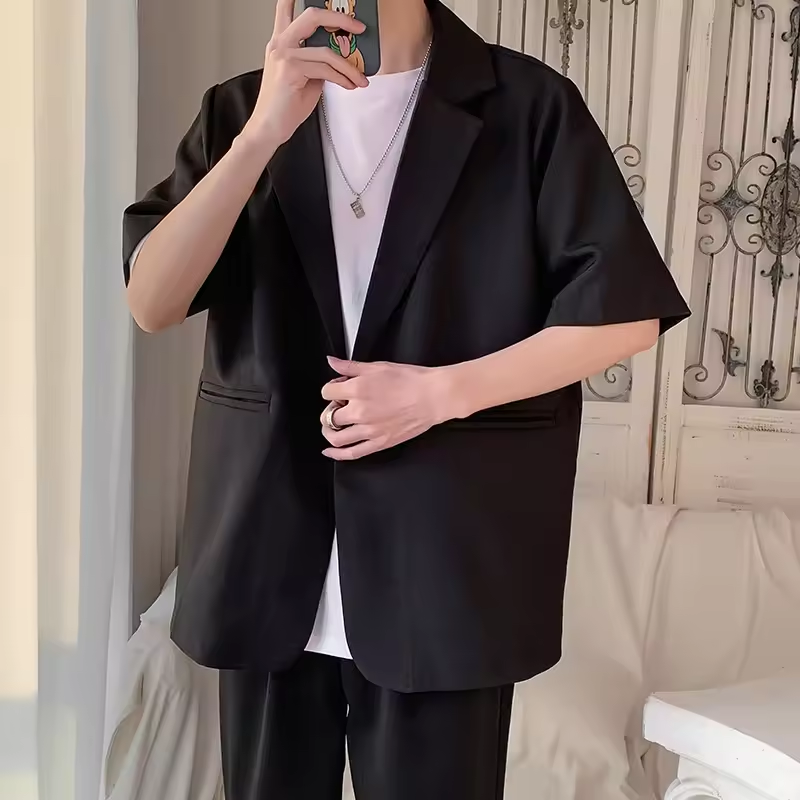
The History and Evolution of Blazers
The blazer has a rich history and has evolved over time. Originally, blazers were worn by members of boating clubs and were part of their uniform. They were bright and boldly colored to stand out on the water. This is where the classic navy blue blazer with gold buttons – still popular today – got its start. Over the years, the blazer has become a symbol of smart dressing and a fashion staple. It has transitioned from its seafaring roots to a mainstay in both formal and semi-formal attire.
In the nineteenth century, the blazer was adopted for use in cricket, tennis, and other sports. It was comfortable, offered freedom of movement, and looked sharp. As it moved into the world of fashion, the blazer became more tailored and structured. Its fabric remained robust, maintaining its original, durable nature. The sports jacket, on the other hand, emerged as a less structured alternative, intended for outdoor activities. Hence, the blazer became the go-to for a sharper, more formal look, differentiating itself from the more casual sport coat.
The military also influenced the blazer’s style. Navy and rowing club blazers originally featured metal buttons with club or military insignias. These details have stayed with us, giving the modern blazer its distinctive look.
In the twentieth century, the blazer sealed its place in men’s fashion. It became a common part of professional attire and was often paired with suit trousers and a tie. It has maintained its versatility, a key part of business casual, and semi-formal wardrobes. Designers began experimenting with different fabrics and cuts to suit a variety of tastes and occasions.
Today, the blazer is an unwavering component in a man’s closet. From its rowing club origins to its current status as a versatile garment for multiple occasions, the blazer has held onto its heritage while adapting to the changing fashion landscape.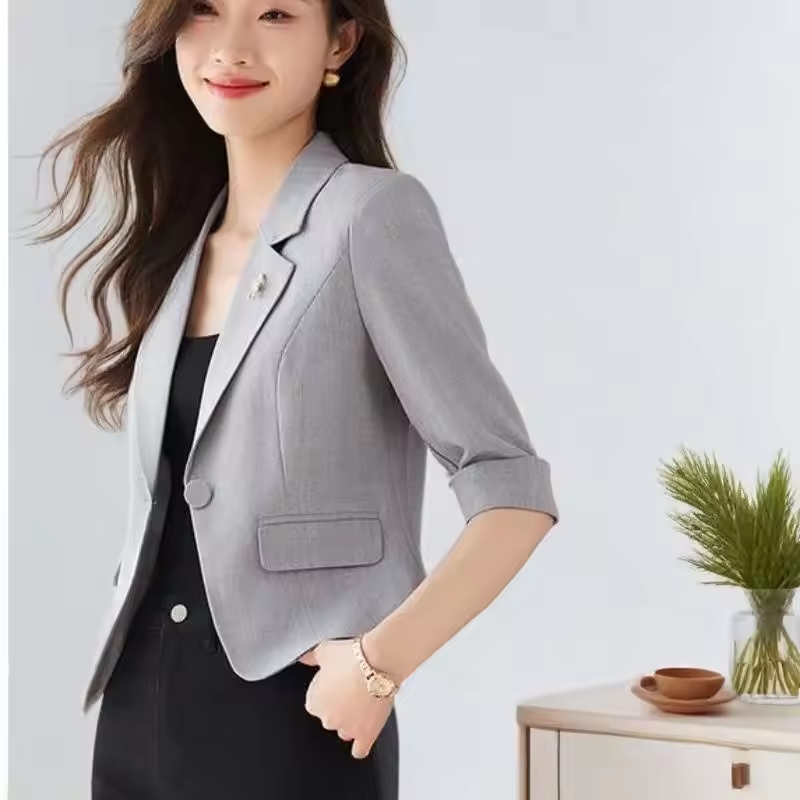
The Origins and Development of Sport Coats
Sport coats have a history that is interwoven with outdoor activities and casual wear. Unlike blazers, which originated from the naval uniforms and club attire, sport coats were born from the need for less structured and more rugged outdoor clothing. Initially, sport coats were part of the attire worn for hunting, shooting, and other country pursuits, which favored ease of movement and durability.
Early sport coats were often made from tweed, a material well-suited for the outdoors due to its resistance to cold weather and its ability to blend in with the rural environment. The textures and patterns of tweed also helped to mask dirt and wrinkles, making it a practical fabric for active use.
Throughout the twentieth century, as leisure activities became more popular, the sport coat’s relaxed style gained traction. It was no longer just a utility garment but started reflecting the wearer’s personal style and became a fashion statement. The designs evolved to include a variety of patterns like checks, stripes, and houndstooth, which added to the sport coat’s distinct, casual character.
The sport coat’s evolution continued with the introduction of lighter fabrics such as linen and cotton, which expanded its wearability to warmer climates and social occasions. Today, sport coats represent versatility and comfort without sacrificing style. They offer an alternative to the traditional blazer for those who seek a more laid-back yet refined look.
In summary, the development of sport coats is marked by their transition from practical outdoor attire to a casual, fashionable jacket option. They are now a staple in a man’s wardrobe, ideal for a range of settings from casual meetings to dinner dates.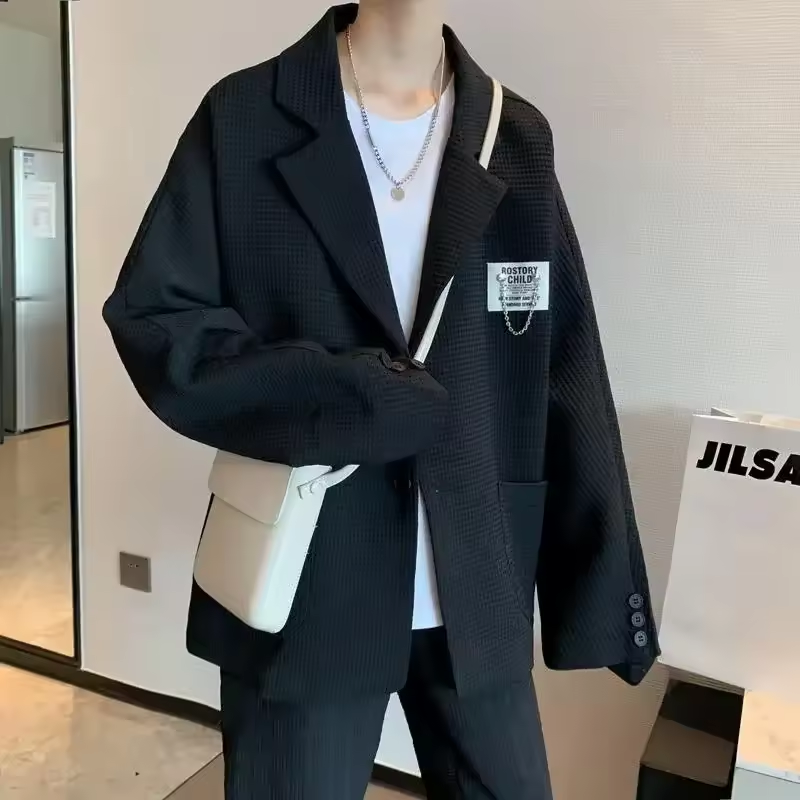
Occasions Suitable for Blazers
Choosing the right occasions to wear a blazer ensures you present yourself appropriately and stylishly. Blazers, with their more formal appearance, are ideal for a range of events where dressing up is expected but not to the extent of wearing a full suit.
Business Settings
In business environments, a blazer can replace a suit jacket for a smart look. When worn with dress pants and a tie, it’s perfect for meetings, conferences, and office gatherings. It’s a solid choice for a business casual attire that impresses without being overly formal.
Social Occasions
Blazers shine at social events like cocktail parties, dinners, or date nights. Choose a well-fitted blazer to elevate a pair of dark jeans or chinos for these settings.
Ceremonies and Celebrations
For weddings, graduations, or anniversaries, a blazer is an excellent option. It offers a polished look that’s suitable for festive and ceremonial events where making a good impression is key.
Networking or Professional Events
Networking and professional events often call for smart attire. A blazer will give you a confident edge and could be a conversation starter if it includes unique details or a striking color.
Travel
Traveling in a blazer is smart as it keeps you ready for any immediate formal engagements upon arrival. It’s also practical, with pockets for your essentials.
By knowing when to wear a blazer, you can navigate different social and professional situations with ease. It’s a versatile piece that can adapt to various levels of formality, depending on what you pair it with.
When to Opt for a Sport Coat
Sport coats are the perfect choice for less-formal yet still stylish occasions. Their relaxed fit and varied patterns convey a smart-casual look ideal for several environments.
Casual Business Meetings
If the event calls for a professional appearance without the rigidity of a suit, a sport coat is apt. Pair it with a dress shirt and slacks for a relaxed, competent outfit.
Outdoor Events
For outdoor gatherings, such as a barbecue or a casual wedding, reach for a sport coat. Its origins in outdoor activities make it a suitable and comfortable option.
Creative Settings
In creative or tech industries, a sport coat matches the casual work culture. It’s a sign of individuality and modern style without being too formal.
Everyday Elegance
For everyday use, a sport coat is easy to throw on and elevates basic attire. Combine it with jeans and a simple tee or sweater for a put-together look.
Friendly Gatherings
Meet friends for dinner or a movie in a sport coat. It adds a touch of sophistication while keeping the vibe casual and approachable.
Recognizing when a sport coat is the best option can enhance your style arsenal. It’s a versatile garment that covers numerous social situations with ease and elegance.
Styling Tips for Blazers
When it comes to blazers, styling is key to making a lasting impression. Here are some tips for looking sharp in a blazer:
- Ensure a Proper Fit: A blazer should hug your shoulders snugly without being tight. Sleeves should end just above the wrist, allowing for a bit of shirt cuff to show.
- Mix and Match: Don’t limit your blazer to traditional pairings. Try wearing it with contrasting dress pants or even well-fitting jeans for a smart-casual look.
- Choose the Right Shirt: A crisp white dress shirt gives a blazer a classic touch. For a less formal look, consider a button-down in subtle patterns or colors.
- Accessorize Wisely: A pocket square adds a dash of elegance; keep it simple with a single color or go bold with a pattern. Cufflinks and a sleek watch can also elevate your ensemble.
- Play with Texture: If your blazer is smooth, opt for a textured tie or shirt. Conversely, for tweed or herringbone blazers, choose a smooth shirt to balance the outfit.
- Keep It Uncluttered: Skip overly embellished or loud items. Stick to one statement piece—be it a bright tie, patterned pocket square, or unique cufflinks.
- Footwear Matters: Finish your look with polished shoes. Loafers or lace-up dress shoes work well. Make sure your shoes complement the color and style of your blazer.
- Layer Thoughtfully: A thin knit sweater or vest under your blazer can be stylish in cooler months. Make sure the layers fit well to avoid a bulky look.
By incorporating these styling tips, you can ensure that your blazer elevates your outfit, whether for professional settings or social affairs. Remember to let personal style shine through while keeping the look cohesive.
How to Choose the Perfect Blazer and Sport Coat
Selecting the right sport coat involves a few key considerations to ensure style and comfort. Here’s how to pick the perfect one:
- Consider the Fabric: Look for breathable materials like linen or cotton for warmer weather, and tweed or wool for cooler temperatures.
- Prioritize Fit: Aim for a relaxed fit that allows movement. Shoulders should sit flat and sleeves should end just before the wrists.
- Match Your Style: Choose colors and patterns that reflect your personality. From subtle plaids to bold checks, your sport coat can be a statement or a classic staple.
- Think About Versatility: A sport coat should work with multiple outfits. Consider neutral tones for more pairing options, or a statement piece for special occasions.
- Inspect the Details: Pay attention to buttons and stitching. Quality details can improve the overall look and durability of your sport coat.
- Test the Layers: Try on the sport coat with different layers underneath. It should fit comfortably over a shirt and light sweater if needed.
- Consider Length: The coat should cover your bottom without being too long. A good length provides balance and proportion to your overall look.
- Assess Comfort: Move around in it. A perfect sport coat won’t restrict your arms or torso, making it practical for both leisure and daily wear.
By keeping these factors in mind, you can find a blazer and sport coat that is both stylish and functional, perfect for any casual or semi-formal occasion.
